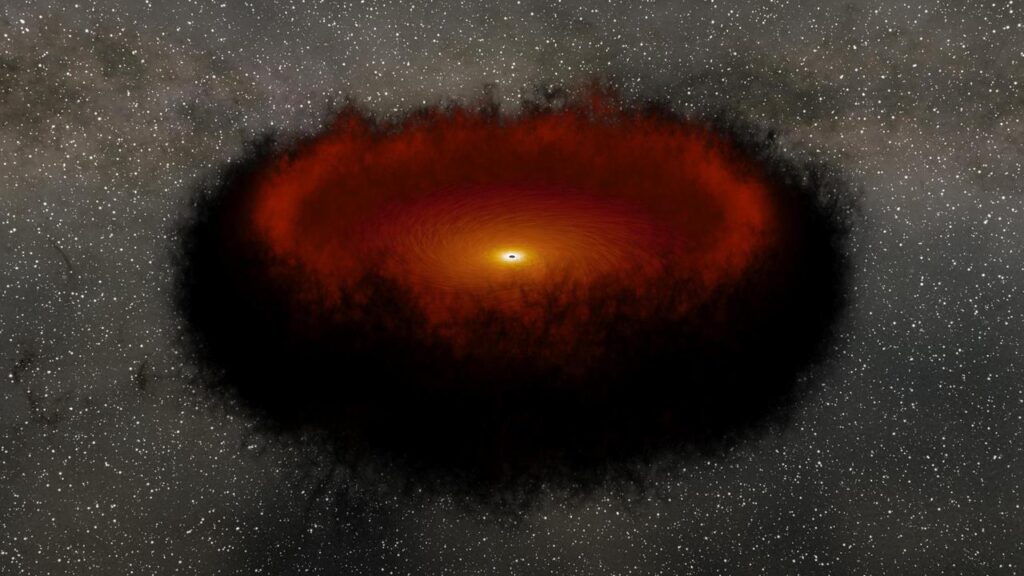As humanity gears up for the next significant leap in space exploration with NASA's Artemis III mission, the spotlight turns not just to astronauts but also to the innovative infrastructure that will support them. The recent announcement of selecting Northrop Grumman to develop a moon-based railroad network underlines a strategic shift from isolated efforts to a cohesive, resource-sharing ecosystem. This railroad network is envisioned as the backbone of lunar logistics, supporting the transportation of humans, supplies, and resources across the Moon. It's a bold step toward creating a scalable, efficient, and interconnected lunar economy, essential for the long-term presence humans hope to establish.
Viral Once
NASA's Mars Sample Return mission has undergone significant revisions due to budget constraints and technical challenges. Originally planned for a 2031 return, the mission is now aiming for 2040 with a simplified, cost-effective strategy. This article explores the implications of the revised plan, focusing on the mission's goals, the scientific importance of the Martian samples, and NASA's innovative approaches to overcoming the obstacles of interplanetary exploration.
In a fortuitous twist of fate, astronomers using data from the European Space Agency's Gaia mission have discovered the largest stellar black hole in the Milky Way, named Gaia BH3, which boasts a mass 33 times that of our sun and resides in the Aquila constellation. This groundbreaking find not only advances our understanding of stellar remnants but also highlights the unexpected surprises still lurking in our galaxy.
Quantum computing offers a unique approach to exploring some of physics' most complex issues, like the interaction between quantum mechanics and general relativity. Maria Spiropulu and her team at Caltech used Google’s Sycamore quantum computer to simulate a holographic wormhole, revealing new insights into quantum gravity. This small-scale experiment demonstrated the potential of quantum computers to simplify and test theoretical concepts that are otherwise challenging to tackle with classical computing methods.
Get ready to explore the stars with NASA’s latest innovation! The Advanced Composite Solar Sail System (ACS3) is set to embark on its journey to space, showcasing cutting-edge technology that harnesses solar wind for propulsion. This pivotal launch not only advances space travel but also promises a sustainable future in exploring our solar system.
NASA's innovative response to dust challenges in space is the Electrodynamic Dust Shield (EDS), a technology designed to protect astronauts and equipment from the abrasive and hazardous regolith found on the Moon and Mars. Using transparent electrodes and electric fields, the EDS effectively removes dust from surfaces, ensuring the efficiency and safety of space missions. The technology has been tested in vacuum chambers and aboard the International Space Station, showing promising results for future lunar and Martian expeditions.
Recent research suggests that neutron stars may capture dark matter, which could significantly affect their thermal properties and evolution. If dark matter particles interact with each other or decay, they might release energy that could heat neutron stars from the inside, making them appear hotter than they otherwise would be. This phenomenon offers a unique method to detect dark matter indirectly and understand its properties, providing a new perspective on the universe's most elusive matter.
Discover the groundbreaking potential of deploying a swarm of tiny probes to Proxima Centauri B. This innovative approach could revolutionize our understanding of our closest exoplanetary neighbor, offering unparalleled insights into its atmosphere, surface, and the possibility of life beyond Earth. Join us as we explore how this fleet of microprobes could unlock the secrets of the cosmos, marking a new era in interstellar exploration.
Explore the fascinating journey of stars as they transition from the main sequence to becoming white dwarfs, and uncover the dramatic effects this transformation has on their planetary systems. From the engulfing of inner planets to the survival of distant worlds, this deep dive reveals the cosmic ballet of destruction and survival, shedding light on the enduring legacy of stars long after their light fades.
Dive deep into the lunar enigma and explore how the Moon's two faces came to be so radically different. From the groundbreaking findings of the Apollo missions to the revealing data of the GRAIL mission, we uncover the events that shaped our celestial companion's uneven terrain. This exploration not only illuminates the moon's past but also provides key insights into the dynamic processes that govern our solar system.
Embark on a celestial journey from 2026 to 2028, as we explore the majestic total solar eclipses gracing Greenland, Iceland, Spain, North Africa, and Australia. Discover the unique dance of shadows that transforms day into night and learn how to safely witness these awe-inspiring events. Whether you're a seasoned eclipse chaser or new to the phenomenon, the upcoming eclipses offer a world of adventure and wonder. Prepare to be captivated by the cosmic ballet that awaits.
In a landmark decision, NASA has chosen three dynamic teams to spearhead the development of the Lunar Terrain Vehicle (LTV), a key component in the upcoming Artemis missions. This pivotal move aims to revolutionize lunar mobility and exploration, marking a new era of human and robotic collaboration on the Moon's surface.












